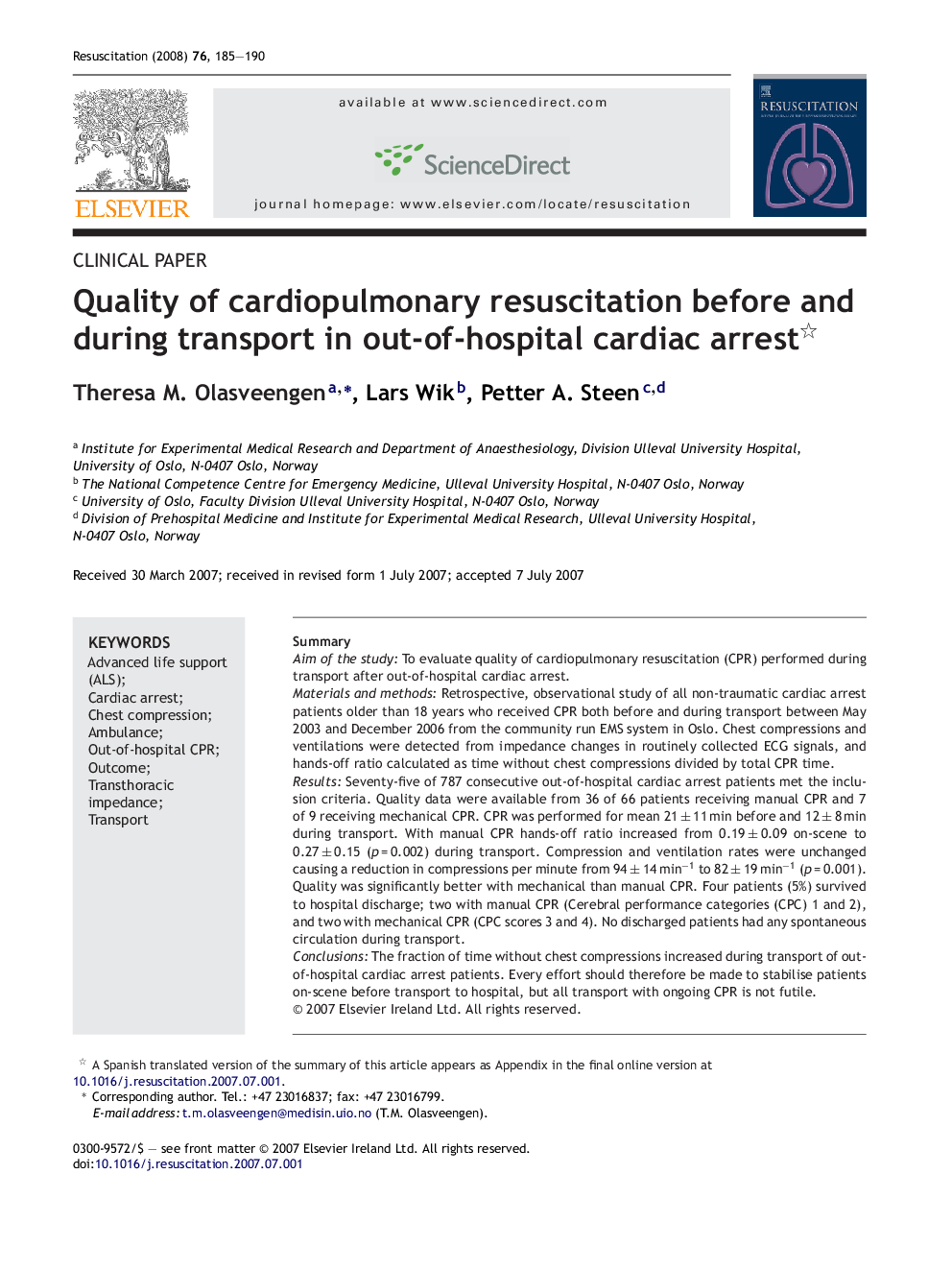| Article ID | Journal | Published Year | Pages | File Type |
|---|---|---|---|---|
| 3011432 | Resuscitation | 2008 | 6 Pages |
SummaryAim of the studyTo evaluate quality of cardiopulmonary resuscitation (CPR) performed during transport after out-of-hospital cardiac arrest.Materials and methodsRetrospective, observational study of all non-traumatic cardiac arrest patients older than 18 years who received CPR both before and during transport between May 2003 and December 2006 from the community run EMS system in Oslo. Chest compressions and ventilations were detected from impedance changes in routinely collected ECG signals, and hands-off ratio calculated as time without chest compressions divided by total CPR time.ResultsSeventy-five of 787 consecutive out-of-hospital cardiac arrest patients met the inclusion criteria. Quality data were available from 36 of 66 patients receiving manual CPR and 7 of 9 receiving mechanical CPR. CPR was performed for mean 21 ± 11 min before and 12 ± 8 min during transport. With manual CPR hands-off ratio increased from 0.19 ± 0.09 on-scene to 0.27 ± 0.15 (p = 0.002) during transport. Compression and ventilation rates were unchanged causing a reduction in compressions per minute from 94 ± 14 min−1 to 82 ± 19 min−1 (p = 0.001). Quality was significantly better with mechanical than manual CPR. Four patients (5%) survived to hospital discharge; two with manual CPR (Cerebral performance categories (CPC) 1 and 2), and two with mechanical CPR (CPC scores 3 and 4). No discharged patients had any spontaneous circulation during transport.ConclusionsThe fraction of time without chest compressions increased during transport of out-of-hospital cardiac arrest patients. Every effort should therefore be made to stabilise patients on-scene before transport to hospital, but all transport with ongoing CPR is not futile.
